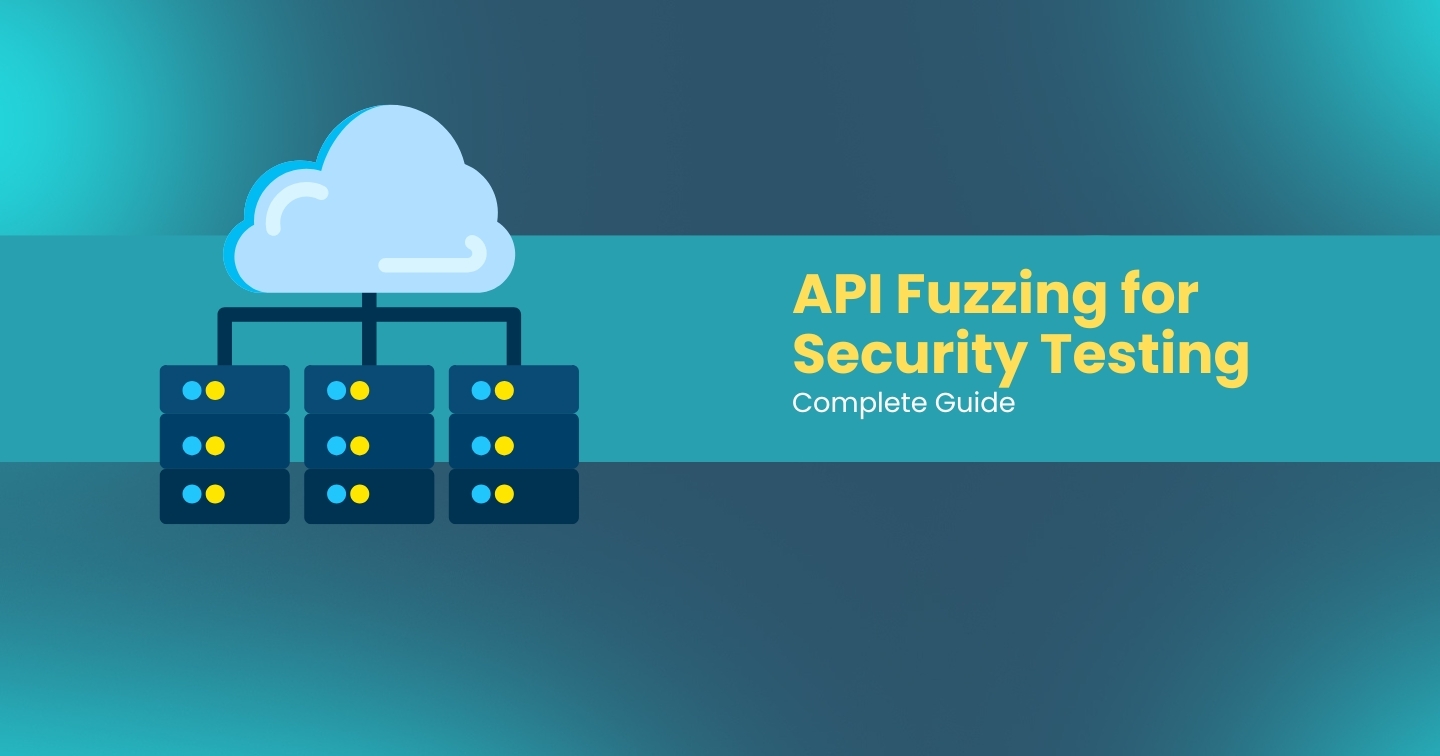APIs drive nearly every digital experience today, from mobile apps and payment gateways to cloud-native microservices. However, as APIs become more integrated into business operations, they also become more attractive targets for cyberattacks. According to industry reports, over 40% of web application breaches originate from vulnerable or misconfigured APIs, leading to major financial losses and compliance issues.
Traditional testing methods like static scans and manual penetration testing often miss subtle but dangerous flaws. These undetected issues allow attackers to exploit untested edge cases, bypass authentication, or manipulate input parameters.
API fuzzing offers a solution. It automates vulnerability discovery by generating massive variations of malformed, randomized, or boundary-case inputs, testing APIs far beyond what humans can manually achieve.
For developers, it strengthens pre-release testing. For security teams, it enhances continuous validation. And for DevSecOps teams, it delivers scalable, automated security baked directly into CI/CD pipelines, ensuring every build is tested before it’s deployed.
What is API Fuzzing and How Does It Work
API fuzzing is an automated security testing method that sends large volumes of unexpected, invalid, or random data to APIs to identify weaknesses. The goal is to observe how systems behave, whether they crash, reveal sensitive data, or respond incorrectly.
The technique is built on two core ideas:
- Input mutation, where valid inputs are altered (for instance, changing data types or injecting symbols) to trigger abnormal behavior.
- Boundary testing, where extreme input values push an API beyond its normal operational limits to expose vulnerabilities.
Here’s how API fuzzing typically works:
- Define the API endpoints using specifications such as OpenAPI or Swagger files.
- Generate thousands of mutated test cases using automated fuzzing engines.
- Send these requests to the target API.
- Monitor responses for anomalies such as crashes, timeouts, or unexpected error messages.
Unlike manual penetration testing, fuzzing doesn’t depend on known exploits. It uncovers zero-day vulnerabilities by exploring the unknown.
Why API Fuzzing Finds Vulnerabilities Other Tests Miss
Traditional security tools often rely on predefined signatures, which limits their ability to catch unknown or logic-based vulnerabilities. Manual testing, while valuable, cannot scale to the complexity of modern API ecosystems.
Fuzzing fills these gaps by exploring millions of combinations of inputs at high speed. This helps discover:
- Edge cases missed by static analysis.
- Input validation weaknesses in rarely tested endpoints.
- Logic flaws that arise only under specific chained conditions.
By dynamically adapting to API responses, fuzzing identifies both functional weaknesses and security defects, providing coverage that’s nearly impossible through manual effort. This makes it indispensable for identifying vulnerabilities such as broken authentication, improper access controls, or rate-limit bypasses that static scans cannot uncover.
Common API Vulnerabilities Discovered Through Fuzzing
Effective API fuzzing can surface a wide spectrum of security risks, including:
- Injection Attacks: Detects vulnerabilities like SQL, NoSQL, and command injection that occur when user inputs are not sanitized.
- Authentication Bypass: Reveals flaws where invalid or expired tokens still grant access, highlighting weak session validation mechanisms.
- Authorization and Privilege Escalation: Exposes cases where users can modify parameters to gain unauthorized access to data or actions.
- Input Validation Failures: Identifies situations where APIs fail to enforce schema validation or boundary limits, resulting in crashes or buffer overflows.
- Rate Limiting and DoS Weaknesses: Simulates automated abuse scenarios to test how APIs handle excessive requests.
- Data Exposure via Error Handling: Finds verbose error messages leaking database schema details or stack traces, a common root cause of data breaches.
These vulnerabilities are often interconnected. For instance, poor input validation can lead to injection attacks, which in turn expose sensitive data. Fuzzing helps uncover these relationships by analyzing behavior across multiple endpoints simultaneously.
How to Implement API Fuzzing in Your Security Workflow
Integrating fuzzing into your security lifecycle helps maintain continuous, automated protection from development to production.
- Integrate with CI/CD Pipelines: Add fuzzing to your build process using security tools that automate input generation and result tracking. APIsec.ai excels here, embedding AI-powered fuzz testing directly into CI/CD pipelines for real-time detection.
- Run in Staging Environments: Fuzzing should occur in controlled, production-like environments to prevent service disruption while maintaining test accuracy.
- Promote Cross-Team Collaboration: Developers, testers, and security engineers should coordinate to triage results efficiently. Clear documentation ensures faster remediation.
- Automate Regular Campaigns: Schedule automated fuzzing runs after code pushes, dependency updates, or API schema changes to maintain ongoing assurance.
API Fuzzing Tools and Automation Strategies
Fuzzing tools vary in complexity and purpose. The best choice depends on your infrastructure, team skill level, and testing frequency.
Automation Strategies:
- Combine fuzzing with vulnerability scanning and SAST for full-spectrum coverage.
- Use AI-powered automation (as in APIsec.ai) to simulate real-world attack chains with high precision.
- Feed results into centralized dashboards for correlation with other security events.
When Fuzzing Reveals What Manual Testing Cannot
Fuzzing uncovers vulnerabilities far faster than traditional testing, with intelligent automation reducing false positives and improving detection accuracy.
Key insights include:
- Detection rates up to 70% faster than manual testing.
- Reduced remediation costs by catching flaws earlier in development.
- Proactive prevention against zero-day exploits through continuous testing.
For security teams, the return on investment is clear: fuzzing improves both the speed and depth of vulnerability discovery while freeing analysts to focus on remediation.
Best Practices for Effective API Fuzzing Campaigns
To get the most out of fuzzing efforts, teams should follow these best practices:
- Prepare Test Data: Use sanitized, realistic datasets to prevent false alarms.
- Monitor in Real Time: Track API responses, resource utilization, and performance metrics during fuzzing.
- Prioritize by Severity: Address authentication and injection flaws first since they pose the greatest risk.
- Automate Ticketing: Integrate tools like APIsec.ai with project management systems to streamline remediation.
- Re-test After Fixes: Always validate resolved issues through repeated fuzzing cycles.
By operationalizing these steps, teams can transition from reactive defense to proactive risk prevention.
Conclusion
API fuzzing is no longer optional for modern security programs, it’s essential. As APIs grow in complexity, automated fuzz testing becomes the most reliable way to uncover hidden vulnerabilities before attackers do.
Platforms like APIsec.ai take fuzzing further by embedding AI-driven attack simulations directly into your CI/CD workflows. This ensures continuous testing, instant alerting, and verified exploit detection, giving your team real security insight instead of endless noise.
Ready to secure every API endpoint?
Start your free sign-up with APIsec.ai today and experience intelligent fuzzing designed for modern DevSecOps.
FAQs
Q: How long does API fuzzing take to complete?
It depends on API size and scope. Basic scans may take a few hours, while complex enterprise APIs can require multiple days. APIsec.ai optimizes the process through intelligent parallelization for faster, more accurate results.
Q: Can API fuzzing break production systems?
If misconfigured, fuzzing can stress systems. It’s recommended to test in staging environments that mirror production. APIsec.ai includes built-in throttling and safety parameters to protect your infrastructure.
Q: What’s the difference between API fuzzing and penetration testing?
Pen testing focuses on targeted attacks by security experts, while fuzzing uses automation to test millions of inputs quickly. Together, they form a strong complementary testing strategy.
Q: Do I need advanced expertise to use API fuzzing?
Not necessarily. Many modern fuzzing tools are user-friendly. However, a basic understanding of API design, HTTP methods, and authentication is beneficial.
Q: How does API fuzzing fit into DevSecOps?
Fuzzing can be embedded directly into CI/CD workflows, ensuring APIs are continuously tested before every deployment. APIsec.ai automates this integration, offering zero-interruption security assurance.
Q: What types of APIs benefit most from fuzzing?
APIs that handle authentication, payments, or personal data, such as REST, SOAP, and GraphQL—benefit most due to their exposure and business-critical nature.
.webp)

.webp)

